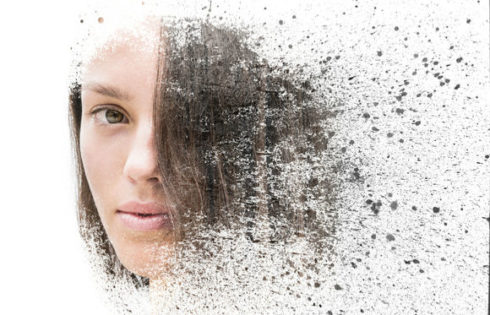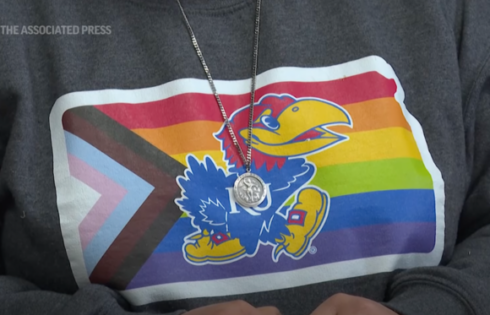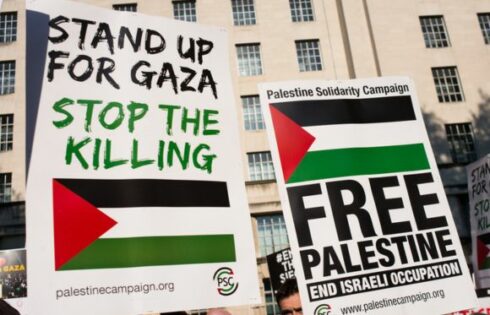A professor from New York University recently gave a speech at a New York think tank in which he asked, in reference to the chaotic state of American campus politics: “How did we mess things up so badly?”
“Today’s identity politics…teaches students to think in a way antithetical to what a liberal arts education should do,” Jonathan Haidt, a professor at NYU’s Stern School of Business, told The Manhattan Institute earlier in the fall.
The speech, recently transcribed in the Manhattan Institute’s City Journal, examines the current “age of outrage” into which American politics, and particularly those on university campuses, have descended.
Our government, Haidt said, is divided “into two all-consuming factions, which cut right down the middle of each of the three branches, uniting the three red half-branches against the three blue half-branches, with no branch serving the original function as he had envisioned.”
Similarly, our campus politics are beset by “safe spaces, microaggressions, trigger warnings, bias response teams, and [a] climate of fearfulness, intimidation, and conflict,” Haidt said.
Haidt traces the fracturing of American politics generally to several causes, including media that broadcast non-stop “outrage stories” and “the new identity politics of the Left.” On college campuses, meanwhile, “a new variant” of identity politics “has swept through the academy in the last five years:”
It is called intersectionality. The term and concept were presented in a 1989 essay by Kimberlé Crenshaw, a law professor at UCLA, who made the very reasonable point that a black woman’s experience in America is not captured by the summation of the black experience and the female experience. She analyzed a legal case in which black women were victims of discrimination at General Motors, even when the company could show that it hired plenty of blacks (in factory jobs dominated by men), and it hired plenty of women (in clerical jobs dominated by whites). So even though GM was found not guilty of discriminating against blacks or women, it ended up hiring hardly any black women. This is an excellent argument. What academic could oppose the claim that when analyzing a complex system, we must look at interaction effects, not just main effects?
But what happens when young people study intersectionality? In some majors, it’s woven into many courses. Students memorize diagrams showing matrices of privilege and oppression. It’s not just white privilege causing black oppression, and male privilege causing female oppression; its heterosexual vs. LGBTQ, able-bodied vs. disabled; young vs. old, attractive vs. unattractive, even fertile vs. infertile. Anything that a group has that is good or valued is seen as a kind of privilege, which causes a kind of oppression in those who don’t have it. A funny thing happens when you take young human beings, whose minds evolved for tribal warfare and us/them thinking, and you fill those minds full of binary dimensions. You tell them that one side of each binary is good and the other is bad. You turn on their ancient tribal circuits, preparing them for battle. Many students find it thrilling; it floods them with a sense of meaning and purpose.
And here’s the strategically brilliant move made by intersectionality: all of the binary dimensions of oppression are said to be interlocking and overlapping. America is said to be one giant matrix of oppression, and its victims cannot fight their battles separately. They must all come together to fight their common enemy, the group that sits at the top of the pyramid of oppression: the straight, white, cis-gendered, able-bodied Christian or Jewish or possibly atheist male. This is why a perceived slight against one victim group calls forth protest from all victim groups. This is why so many campus groups now align against Israel. Intersectionality is like NATO for social-justice activists.
The result of this ideology, Haidt writes, is that, “on any campus where intersectionality thrives, conflict will be eternal, because no campus can eliminate all offense, all microaggressions, and all misunderstandings. This is why the use of shout-downs, intimidation, and even violence in response to words and ideas is most common at our most progressive universities, in the most progressive regions of the country.”
Haidt notes that the signs moving forward are not all terrible:
[A]s things get worse on campus, more people are beginning to stand up, and more people are searching for solutions. Some college presidents are starting to stand up. They all know they are sitting on a powder keg, and they want to defuse it. Also, they are generally liberal scholars, deeply opposed to illiberalism. Carol Christ, the new chancellor of U.C. Berkeley, is clearly mortified by what happened to her school’s reputation last spring, and she has taken a very strong and public stand, saying that U.C. Berkeley supports freedom of speech and will pay to protect speakers. Robert Zimmer, the president of the University of Chicago, has been consistently excellent. I have spoken with several other college presidents who would like to stand up publicly but still feel that the illiberal factions on their campuses are too strong.
If “a few more presidents stand up,” Haidt writes, “and if applications to schools like the University of Chicago surge this year, then I think we’ll see the floodgates open, possibly next fall.”
Like The College Fix on Facebook / Follow us on Twitter




Add to the Discussion